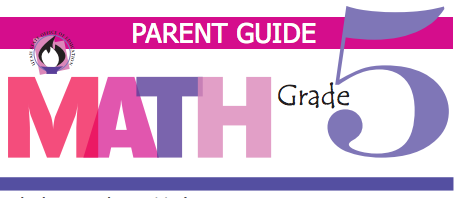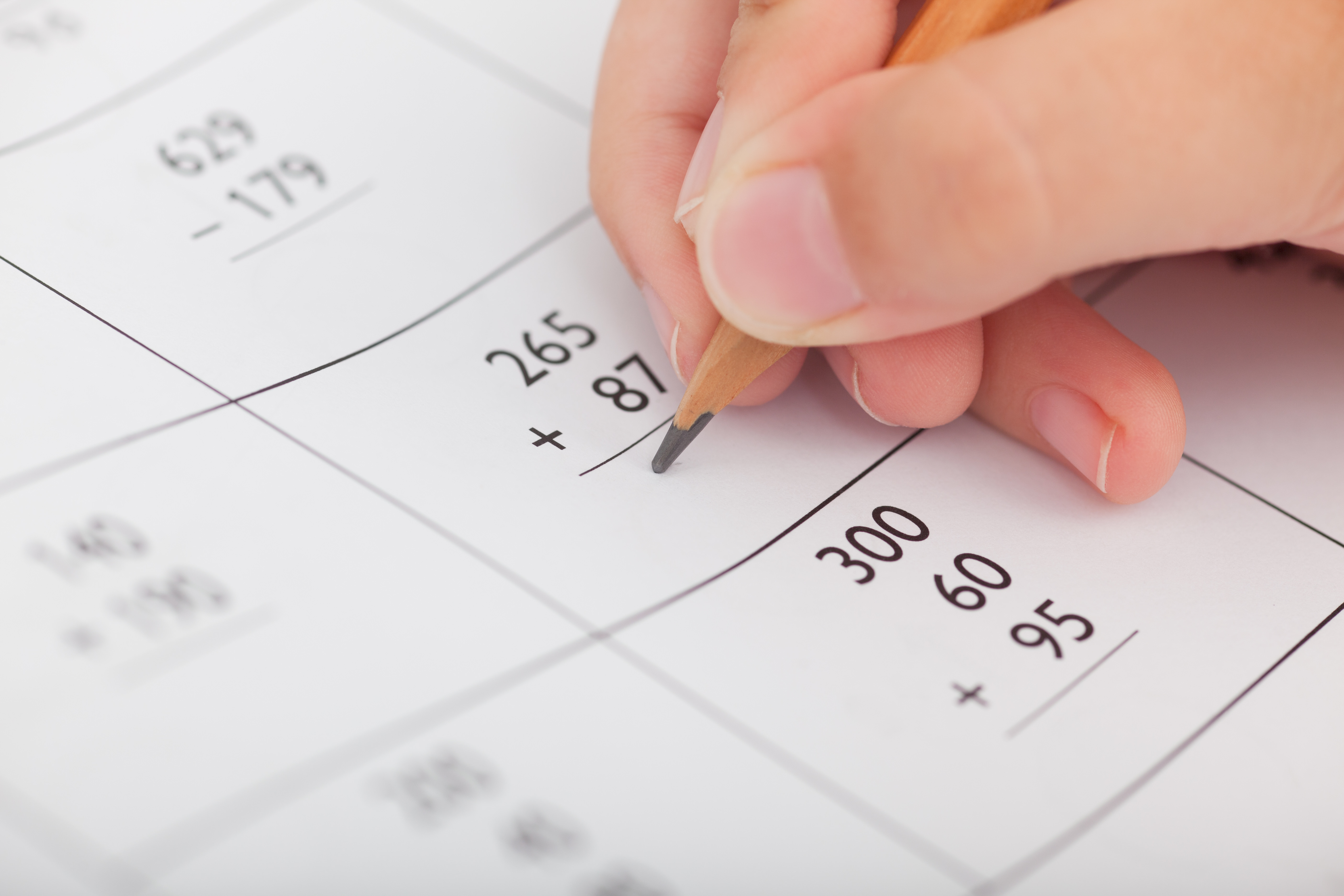To read and/or download a copy of the Parent Guide for the Utah Core State Standards, Fifth Grade, in three critical areas of Math, please click here. Standards, definitions, and examples are provided.
Math Essential Standards
Strand: OPERATIONS AND ALGEBRAIC THINKING
Write and interpret numerical expressions, and analyze patterns and relationships.
Standard 5.OA.1
Use parentheses, brackets, or braces in numerical expressions, and evaluate expressions with these symbols.
I Can: Create and evaluate numerical expressions that include parenthesis, brackets, or braces.
Strand: NUMBER AND OPERATIONS IN BASE TEN
Understand the place value system. Perform operations with multi-digit whole numbers and with decimals to hundredths.
Standard 5.NBT.2
- Read, write, and compare decimals to thousandths.
- Read and write decimals to thousandths using base-ten numerals, number names, and expanded form. For example, 347.392 = 3 x 100 + 4 x 10 + 7 x 1 + 3 x (1/10) + 9 x (1/100) + 2 x (1/1000).
- Compare two decimals to thousandths based on meanings of the digits in each place, using >, =, and < symbols to record the results of comparisons.
I Can: Read and write decimals to thousandths using base-ten numerals, number names, and expanded form.
I Can: Compare two decimals to thousandths based on meanings of the digits in each place, using >, =, and <.
Standard 5.NBT.5
Fluently multiply multi-digit whole numbers using the standard algorithm.
I Can: Fluently multiply multi-digit whole numbers using the standard algorithm.
Standard 5.NBT.7
Add, subtract, multiply, and divide decimals to hundredths, using concrete models or drawings and strategies based on place value, properties of operations, and/or the relationship between addition and subtraction; relate the strategy to a written method and explain the reasoning used. In this standard, dividing decimals is limited to a whole number dividend with a decimal divisor or a decimal dividend with a whole number divisor. Compare the value of the quotient on the basis of the values of the dividend and divisor.
I Can: Add, subtract, multiply, and divide decimals to hundredths, using concrete models or drawings and strategies based on place value.
Strand: NUMBER AND OPERATIONS – FRACTIONS
Use equivalent fractions as a strategy to add and subtract fractions. Apply and extend previous understandings of multiplication and division to multiply and divide fractions.
Standard 5.NF.1
Add and subtract fractions with unlike denominators (including mixed numbers) by replacing given fractions with equivalent fractions in such a way as to produce an equivalent sum or difference of fractions with like denominators. For example, 2/3 + 5/4 = 8/12 + 15/12 = 23/12. (In general, a/b + c/d = (ad + bc)/bd.)
I Can: Add and subtract fractions with unlike denominators.
Standard 5.NF.4
Apply and extend previous understandings of multiplication to multiply a fraction or whole number by a fraction.
- Interpret the product (a/b) x q as a part of a partition of q into b equal parts; equivalently, as the result of a sequence of operations a x q ÷ b using a visual fraction model. For example, use a fraction model to show (2/3) x 4 = 8/3, and create a story context for this equation. Do the same with (2/3) x (4/5) = 8/15. (In general, (a/b) x (c/d) = ac/bd.)
- Find the area of a rectangle with fractional side lengths by tiling it with unit squares of the appropriate unit fraction side lengths, and show that the area is the same as would be found by multiplying the side lengths. Multiply fractional side lengths to find areas of rectangles, and represent fraction products as rectangular areas.
I Can: Create visual models and a story context to represent multiplication of a fraction by a whole number or a fraction.
Standard 5.NF.7
Apply and extend previous understandings of division to divide unit fractions by whole numbers and whole numbers by unit fractions. Use strategies to divide fractions by reasoning about the relationship between multiplication and division. Division of a fraction by a fraction is not a requirement at this grade.
- Interpret division of a unit fraction by a non-zero whole number, and compute such quotients. For example, create a story context for (1/3) ÷ 4, and use a visual fraction model to show the quotient. Use the relationship between multiplication and division to explain that (1/3) ÷ 4 = 1/12 because (1/12) x 4 = 1/3.
- Interpret division of a whole number by a unit fraction, and compute such quotients. For example, create a story context for 4 ÷ (1/5), and use a visual fraction model to show the quotient. Use the relationship between multiplication and division to explain that 4 ÷ (1/5) = 20 because 20 x (1/5) = 4.
- Solve real-world problems involving division of unit fractions by non-zero whole numbers and division of whole numbers by unit fractions, for example, by using visual fraction models and equations to represent the problem. For example, how much chocolate will each person get if three people share 1/2 lb. of chocolate equally? How many 1/3-cup servings are in two cups of raisins?
I Can: Create visual fraction models and a story context to represent division of unit fractions by whole numbers and whole numbers by unit fractions and solve real-w0rld problems.
Strand: MEASUREMENT AND DATA
Convert like measurement units within a given measurement system. Represent and interpret data. Understand concepts of geometric measurement and volume, as well as how multiplication and addition relate to volume.
Standard 5.MD.3
Recognize volume as an attribute of solid figures and understand concepts of volume measurement.
- A cube with side length one unit, called a “unit cube,” is said to have “one cubic unit” of volume, and can be used to measure volume.
- A solid figure which can be packed without gaps or overlaps using n unit cubes is said to have a volume of n cubic units.
I Can: Understand and measure volume.
Strand: GEOMETRY
Graph points on the coordinate plane to solve real-world and mathematical problems. Classify two-dimensional figures into categories based on their properties.
Standard 5.G.2
Represent real-world and mathematical problems by graphing points in the first quadrant of the coordinate plane, and interpret coordinate values of points in the context of the situation.
I Can: Solve problems using points on a coordinate plane.


